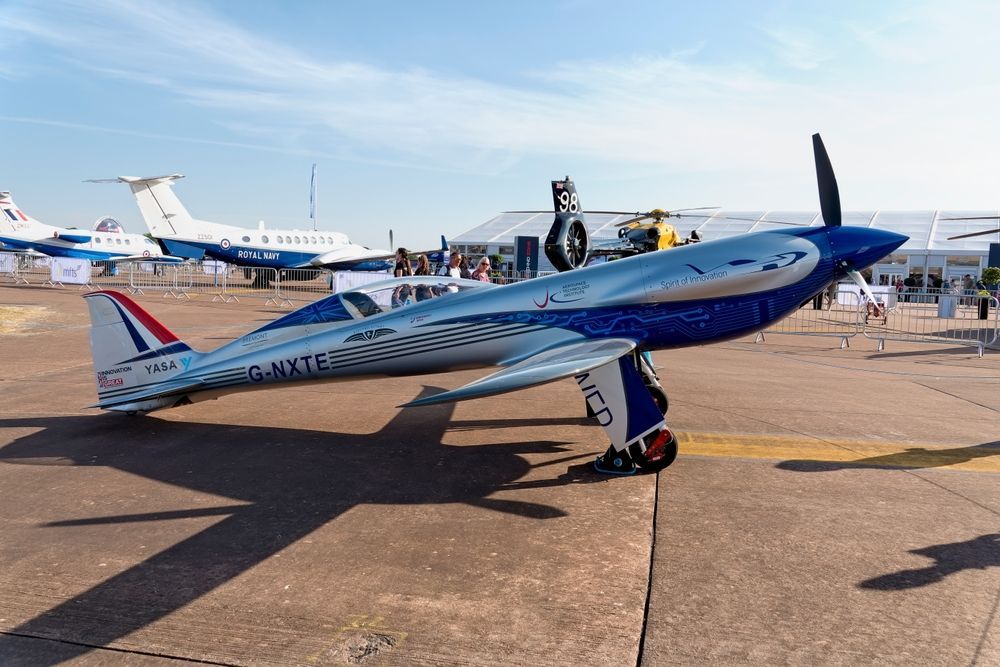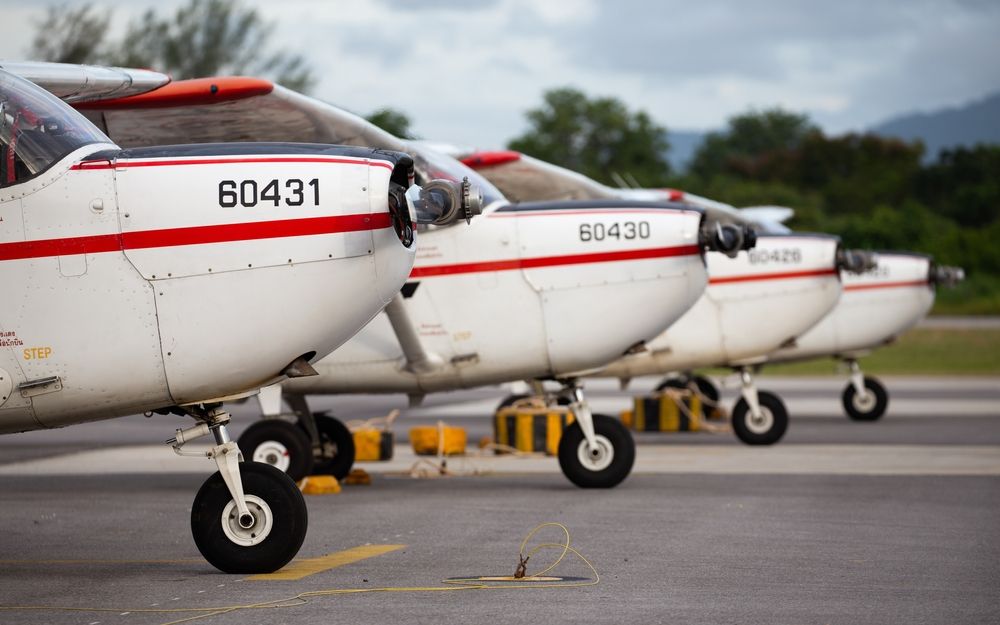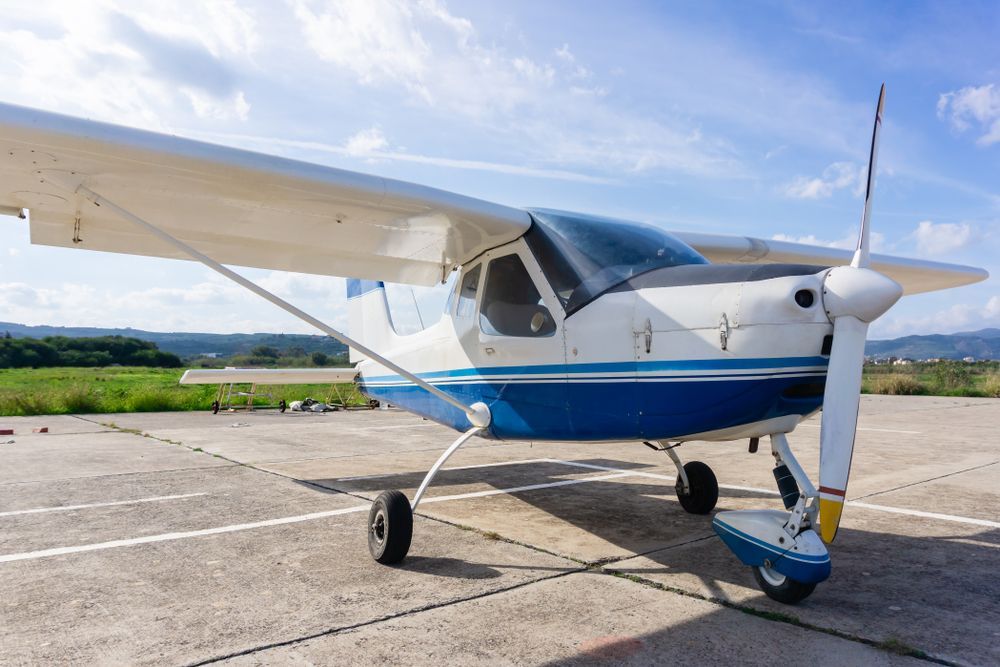What are the 4 Types of Landing Gear?
Share this Article:
What comes up must come down.
And when you’re piloting or flying as a passenger in any type of aircraft, you don’t want to come down without the right type of landing gear. And while the landing gear is perhaps best associated with, well, landing, it also helps with aircraft takeoff and with taxiing on runways. It’s also imperative for supporting the aircraft when it is parked in the hangar. The bottom line is that landing gear doesn’t just play an important role, but perhaps a bigger and more significant role than what you might initially think.
In this post, we’ll cover the four main types of landing gear, the pros and cons of each type, and more. Read on for a closer look at what you need to know about fixed, retractable, tricycle, and tailwheel gear.
Fixed Gear
As the name implies, fixed landing gear is that which is permanently attached to the aircraft. It always remains extended and exposed, both when the aircraft is on the ground and while it’s in the air. Fixed landing gear tends to be both simple and easy to maintain. It’s commonly installed on small aircraft and often consists of two wheels that extend out on angled axles from the front-center portion of the fuselage. Pontoons are also characterized as a fixed style of landing gear.
While fixed landing gear is simple, easy to maintain, and a cost-effective solution, it does have some notable drawbacks. For instance, the fixed nature of the landing gear creates constant drag, which can restrict aerodynamics and also reduce fuel efficiency.
Retractable Gear
Retractable landing gear is popular on commercial airliners and aircraft that typically fly at fast speeds and high altitudes. As the name implies, retractable landing gear is landing equipment that either folds or stows inside of the plane while it is in the air. Perhaps the biggest benefit of retractable landing gear is that it can reduce an airplane’s drag, improve its aerodynamics, and increase its overall cruising speed and glide distance.
This type of landing gear tends to be operated either electronically, manually, or hydraulically. More advanced mechanisms are necessary with retractable landing gear. The makeup tends to involve a series of gear actuators, gear extensions, pumps, and gear switches.
Retractable landing gear does tend to add some weight to the aircraft, which is why it tends to be installed on commercial airliners or larger planes that can adequately handle it and commit to maintaining it. It tends to be more complex and more expensive than the other types of landing gear on this list.
Tricycle Gear
Tricycle landing gear is the most common type as it pertains to general aviation airplanes, which tend to be small or medium-sized. In fact, just about every general aviation aircraft that’s been designed and manufactured within the past decade has likely been outfitted with tricycle landing gear.
Tricycle landing gear consists of two main wheels that are located under the fuselage. A third wheel is typically located near the front, or nose, of the aircraft. Though tricycle gear tends to be a bit heavier than other types of landing gear, it offers many advantages for the smaller aircraft that it comes equipped on. For instance, it makes steering easier. It also makes takeoffs and landings more stable and easier to perform and it reduces the risk of ground loop.
Tricycle gear tends to be fixed and fairings are also commonly installed over each wheel, which helps improve aerodynamics and improve overall speed. Tricycle gear may also be retractable. Common retractable tricycle gear designs often involve the two wheels retracting either into the fuselage or underneath the wings, while the front wheel may retract into the nose. Retractable tricycle gear can further help eliminate drag and improve aerodynamics.
Tailwheel Gear
Tailwheel landing gear used to be the most popular type of landing gear on small aircraft, but has been largely replaced by the tricycle setup. Tailwheel landing gear is described by a three-wheel setup – two large wheels located under the front-central part of the fuselage and a single, smaller wheel located near the back, or tail, of the aircraft. It was a popular landing gear configuration in the early days of aircraft design and manufacturing, specifically the period from the 1920s through the 1950s. This type of landing gear is still used today, albeit sparingly.
Some of its benefits include:
- It’s simple to implement.
- The two front tires make it easy for aircraft to land on various types of terrain. For this reason, the tailwheel setup is still commonly used on bush planes that tend to take off and land on grass or unpaved runways.
- It’s an ideal setup for soft-field operations.
However, the tailwheel setup also came with many disadvantages that were eventually corrected as aircraft design and engineering progressed over time. Some of the key disadvantages of tailwheel landing gear include:
- Safety issues: Since landing has to be done with the two front wheels and the rear tailwheel, it can be difficult for pilots to see the ground. This was corrected with the tricycle landing gear where the rear wheel was moved to the front of the plane.
- Aircraft can nose over during takeoffs and landings if too much of the brake is applied.
- The aircraft is more susceptible to tilting or wings coming into contact with the ground during landing.
- It’s more difficult to maneuver aircraft during taxing.
Contact Us Today
For more information on the four types of landing gear and which ones might work best for your next aircraft, contact us at J.A. Air Center today. As a leader in aircraft repair and maintenance , we have the know-how, experience, and qualifications to help pair your aircraft with the right type of landing gear. Contact us today for more information and to book your next service appointment.




